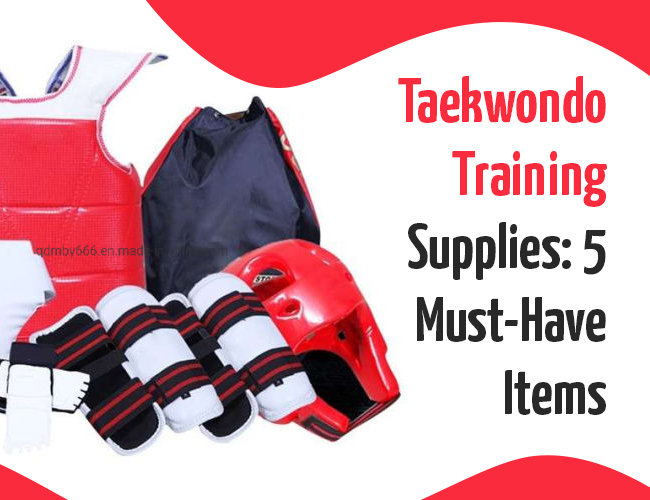
Taekwondo is a martial art practiced all over the world. The aim is to land punches or kicks on your opponent and earn points for specific moves and sequences. Practitioners compete for three rounds, with the winner being the one with the most points. Taekwondo requires discipline, agility and rigorous training to master.
As with every sport, it requires that students have a unique set of gear to protect themselves during practice and competitions.
If you’ve just begun your taekwondo journey, here’s a list of must-haves for increased performance and personal protection.
5 Necessary Training Supplies to Practice Taekwondo
Here is a list of what beginners will need to practice taekwondo.
1. Uniform
Also referred to as a dobok (“do” meaning way and “bok” meaning clothing), a taekwondo uniform typically consists of a plain white jacket, white pants and a belt.
The jacket has a wide V-neck and is made using a variety of fabric weights. This gives more power to practitioners to choose the right heaviness and thickness. Uniforms made from heavier fabrics tend to be more durable and crisper but can make the wearer feel hot. Beginners and children generally wear uniforms made with lighter fabrics, with heavier ones suited to instructors and more advanced practitioners. The pants have an elastic waist for increased comfort when sparring or competing. The belt comes in either bright vibrant colours or black to denote the wearer’s rank or grade.
2. Sparring Gear
When taking part in tournaments, practitioners are required to wear protective gear that includes the following items:
● Hand Wraps or Gloves
Taekwondo training can take a serious toll on your wrists and hands. That’s why many practitioners use gloves or cloth wraps around their hands and wrists to prevent injuries. These help fighters avoid cuts and prevents wrist joints from bending in awkward positions during practice.
● Forearm Guards
In taekwondo, fighters use their forearms to guard against punches and kicks. A well-fitted forearm guard reduces the impact of these strikes.
● Mouth Guard
A must-have for any contact sport, including taekwondo, is a mouthguard to prevent practitioners from biting their tongue or losing teeth. There are various types available but the most common is colloquially called being the ‘boil and bite’. These are made using materials that soften when put into boiling water. The resulting product moulds to your teeth when you bite down on it.
● Chest Protector
A great way to score points in taekwondo is to punch or kick your opponent in the torso. However, when practicing or competing, it’s best for fighters to wear a chest protector, also known as a hogu. This type of vest covers the entire torso to prevent injuries during practice.
● Headgear
This padded helmet resembles the type used in water polo. It’s constructed to cover both ears and protect fighters from head or ear injuries.
● Groin Pads and Cup
These are highly recommended although it’s forbidden to hit the area on purpose in taekwondo.
● Shin Guards
Make sure these are approved by the World Taekwondo Federation.
3. High-Quality Gear Bag
As you’ll have a good amount of equipment to carry back and forth from the gym or dojo, a roomy and sturdy bag is recommended.
4. Proper Footwear
Kicking the opponent’s hogu can result in injuries, so light and breathable shoes are commonly worn to protect the fighter’s feet in competition.
Note: most practitioners prefer training barefoot as it improves their competitive posture, conditions their feet and strengthens muscles. This helps them land kicks with more force.
5. Mat
No one wants to slip and fall on a hard floor. This makes a training mat necessary. They also offer stability, making falls less likely. To that end purchase a mat at least one inch thick.
Every taekwondo practitioner, whether they’re a beginner or an expert, needs the right equipment to make the most of both their training and competition. Of course different programs and events have different requirements so verify what you need ahead of time. Having the right supplies and equipment can make taekwondo both exciting and safer.
